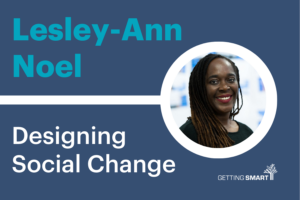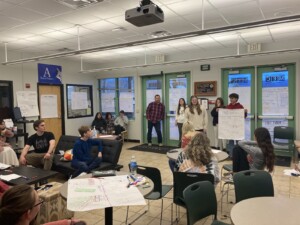Setting First-Year, First-Generation College Students on the Bridge to Success

By Nicole Howard
This fall, students all over the country are beginning their higher education journey. Some may be familiar with the college environment—thanks to their siblings, or stories from their parents—but for others, this is a brand new world.
There will be a mandatory orientation where student ambassadors will entertain and staff will inform, of course. Students will receive campus maps, schedules and plenty of other information over the next semester.
Unfortunately, that orientation isn’t always sufficient for those who need more support as they transition from high school to highly rigorous college courses, deal with financial stress, learn to manage their time, and navigate a new social environment. In fact, 30 percent of students at four-year colleges and universities drop out after their first year.
30 percent of students at four-year colleges and universities drop out after their first year.
While I do not fall into that 30 percent, I can certainly relate with the struggles of these students. In 2006, within weeks of my high school graduation, I was already arriving on campus, ready to move into my dormitory and say goodbye to my family, months before a majority of the incoming freshman class. Why? Unlike the majority of students entering their freshman year at American University (AU), my admission letter came with a contingency: I would need to successfully complete the seven-week residential academic program with about 40 other incoming first-generation and multicultural students.
The Summer Transition Enrichment Program (STEP) at AU was developed more than 20 years ago in an effort to better prepare selected first-generation and multicultural first-year students for academic success. Those selected for the program are generally those whose application credentials revealed a strong potential for success.
Easing the Transition to College for First-Year, First-Generation Students
Throughout the program, participants are introduced to the campus community and receive focused instruction to better ensure that they’re prepared to transition to college. The university also invests in the success of students, covering their financial expenses for up to four credits of summer courses, textbooks, housing, meal plans, academic support services, workshops and orientation.
The return on investment for the university is a high retention rate among the STEP class. Speaking from experience, I felt confident and prepared at the onset of my higher education journey due to the strong foundation that STEP provided me, along with the added support, opportunities and resources made available to me through the program.
According to the State of College Admission Report, the top factors that determine admissions decisions are grades in college preparatory courses, strength of curriculum, standardized admissions tests and overall GPA. The importance here is that selection for this program looks beyond these popular factors to evaluate the whole student based on recommendations, class rank, and extracurricular activities.
I believe this holistic admission process worked in my favor, giving the admissions staff a more accurate, all-around picture of my ability to succeed. In 2010, I graduated from American University with a B.A. in Public Communication.
What makes it work? STEP gave me a true support system through college completion and beyond. During the program, I and my fellow STEP students were introduced to a number of campus resources and administrators. We also received individualized time with financial aid counselors, and program staff to ensure that we were correctly registered for classes—and these services continued throughout our academic careers.
Having a system in place to communicate with students who are falling behind is critical to student success. Even after summer, someone from the program continues to check in with students to make sure they’re on track, paying close attention to everything from academics and finances to their emotional wellbeing.
Within the first week of STEP, I was required to write a letter to myself that would be returned to me at the end of the summer. This is an excerpt:
I need to find a mentor, someone I can call on when I need encouragement or advice. This is vital because no matter how much I want to do everything on my own, I can’t. I need a support system to be the arch of a bridge to hold me up at or before a breaking point. When the struggles of life come like a strong gust of wind, the arch will hold tight to support me and keep me from collapsing.
I was able to find the encouragement I needed throughout my time in college, thanks to the network I formed during STEP. Following graduation, I still had coffee meetings with Tiffany Speaks, Senior Director at the Center for Diversity & Inclusion. Sometimes the talks were to catch up; other times I needed advice on employment opportunities. Now, six years since earning my degree, I continue to grow in my career and have maintained full-time employment.
A Support System Through College and Beyond
Summer bridge programs fill in that gap of being on paper, “college ready,” but provide some extra time to really grasp what that entails, including doing the additional course work and being surrounded by people who want to help you succeed.
If these programs were available for more students who want additional preparation, it could possibly help prevent thousands of students from dropping out their freshman year, and instead go on to live successful lives after college.
For more, see:
- The One Chart You Need to Help HigherEd Learners Succeed
- Credential Reform: Technology and Changing Workforce Needs Will Drive Our Future HigherEd
- 15 HigherEd Student Personas That Will Help You Redesign Learner Experience
Nicole Howard is a 2010 graduate of American University and a Content Development Specialist at Hobsons. Follow her on Twitter: @Ms_ShininLight
Stay in-the-know with all things EdTech and innovations in learning by signing up to receive the weekly Smart Update.



0 Comments
Leave a Comment
Your email address will not be published. All fields are required.